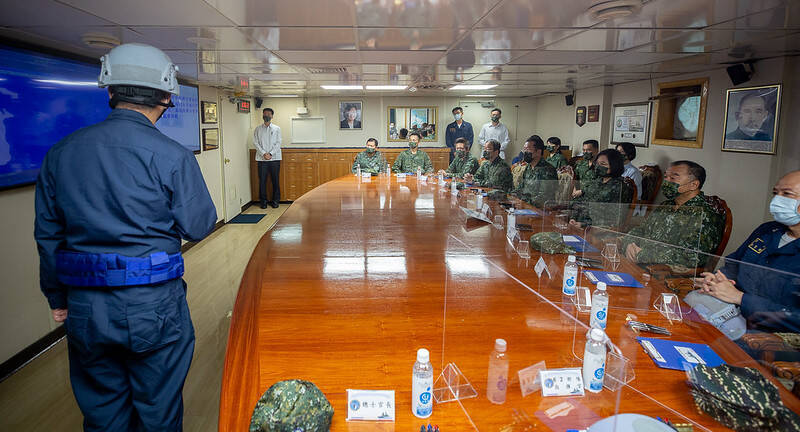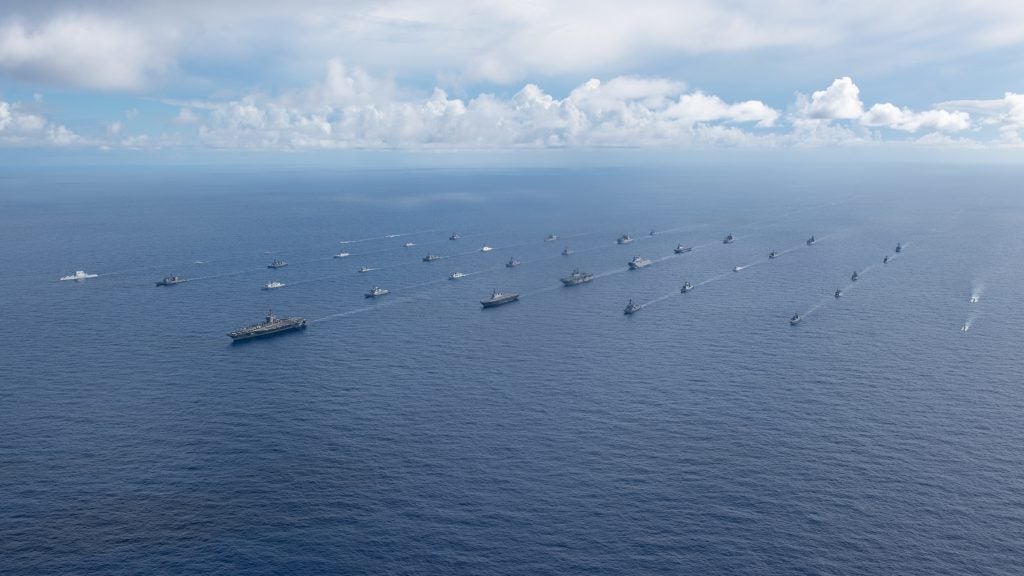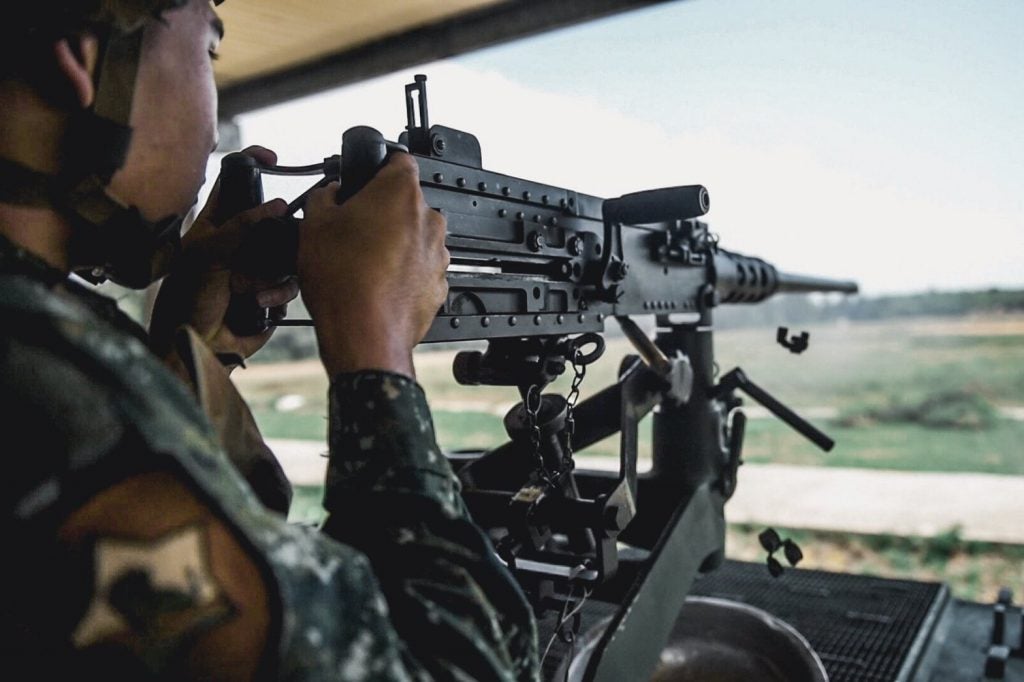With Lessons From Ukraine, Taiwan Concludes Own Invasion Drills
On 25 July, Taiwan began its Han Kuang 38 Exercise, simulating the repelling of an attack by China. This year, the annual drills have been even to greater significance as the Russian invasion of Ukraine unfolds, and the Chinese Communist Party’s continued non-exclusion of the use of force in retaking the islands, which it considers a part of Chinese territory.
This year’s drills have the stated goals of improving the Taiwanese Armed Force’s ability in “Forces Preservation, Integrated Air Defense”, “Joint Interdiction”, and “Joint Territorial Defense”. As the drills began, the branches first dispersed their forces and distributed warplanes away from bases in the Island’s China facing west, to the east coast.
In Hualien, evacuated Mirage fighters were sent into bunker-hangers under the protection of 40 F-16Vs to survive the initial missile and air strike, preserving the Republic’s electronic warfare capabilities. Under simulated missile barrages, networks of underground tunnels under Taiwan’s airbases became the resupply and maintenance centers of the Air Force, shielding the fighters underneath from intelligence satellites and raids. In measures to prevent the initial attack from decapitating high command, military police units in Taipei were tasked to protect the Office of the President from cruise missile and special agent attacks, coordinating with local police and fire brigade to evacuate the President and Vice President to underground shelters, relocating command posts, and defending the office grounds.

Near the capital of Taipei, Army forces emulated the Ukrainian model of defense against Russian forces, with reserve troops digging trench systems and fortifying positions against Chinese forces, preventing any foothold to station an attack against the capital. Planning against scenarios similar to the Battle of Antonov Airport, anti-air assault drills were conducted at Taipei Airport, with an emphasis on using the Army’s CM-34 “Clouded Lepoard” and V150 armoured vehicles in repelling paratrooper forces. Anti-ship missile systems dispersed from bases to stations at the border, targeting Chinese naval transports and escort elements. At Taiwan’s beachheads, combined arms teams suppress and eliminated landing troops, practicing coordination between artillery, fighter cover and mounted infantry teams.

Naval elements carried out the established doctrine of landing denial, blockading likely landing beaches and preventing Chinese marines from making landfall. President Tsai Ing-wen and her cabinet personally boarded the Keelung, flagship of the Keelung-class destroyers, and observed an Air-Sea battle drill involving 20 ships and 15 combat aircraft. In order to increase the number of fighting ships available, the Anping class coast guard patrol vessels were fitted with and fired Hydra rockets in the exercise, the class also has room for eight Hsiung Feng III anti-ship missile launchers. The drills involved sustaining air superiority in critical coastal areas, anti-mine warfare and AirSea anti-submarine warfare.
The State of the Pacific

The exercises have been conducted under the heightened tensions between Taipei, Beijing and Washington. With Chinese military aircraft making more frequent trips into the island’s self-proclaimed Air Defense Identification Zone and encircling the island with bomber and electronic warfare aircraft. The Chinese government’s refusal to condemn the Russian invasion of Ukraine has also heightened tension across the strait, being seen as a potential indicator of their own internal calculations regarding the “when and how” of a military operation across the strait.
Concurrent to the exercise, the 2022 Rim of the Pacific (RIMPAC) Exercise was conducted further into the Pacific, gathering a massive flotilla of United States and allies ships. House Speaker Nancy Pelosi is also scheduled to tour Asia shortly after Han Kuang concludes, with a potential visit to Taiwan in addition to United States allies Japan, South Korea, Malaysia and Singapore. Last week a contributor to Global Times, a Chinese state media outlet, reportedly called for shooting down the House Speaker’s aeroplane should it fly to Taiwan, while the same outlet later posted an article outlining five ways the Chinese military could ‘thwart’ Pelosi’s visit.

Analysis
The increase in asymmetric tactics seen in the exercises indicates that Taiwanese doctrine is steadily departing the Cold War mentality of peer-to-peer warfare with the formerly less industrialized China, utilizing agile ships and ground thus allowing Taiwanese defenders to be more cost effective against the potential invasion fleet. The tactic of denial at sea similarly allows the Taiwanese to maximize effectiveness and minimize damage to their own infrastructure, but more than that, the massive naval exercises prepare against a scenario of Chinese blockade of the island, starving its citizens, the coordinated Navy and Air Force will buy more time for the ground forces to fortify and for diplomatic personnel to garner political and military support. Increasing the odds of Taiwanese survival in a potential conflict.
The exercises also demonstrates a reasonable determination in Taiwan’s government to repel any Chinese invasion, indicative of the rising Taiwanese identity of the younger voters who voted the current administration into power, even if an invasion were to succeed, Beijing may experience extreme difficulty in integrating the subjugated population. As Taiwan’s valuable cultural and technological industries both require a highly educated class of professionals, the resulting brain drain and continued sabotage may prove extremely costly for potential occupiers. The Han Kuang 38 Exercise shows there is fresh determination to prevent that scenario from ever happening.
The opinions expressed in this editorial are those of the author and do not necessarily reflect the opinions or views of Overt Defense

